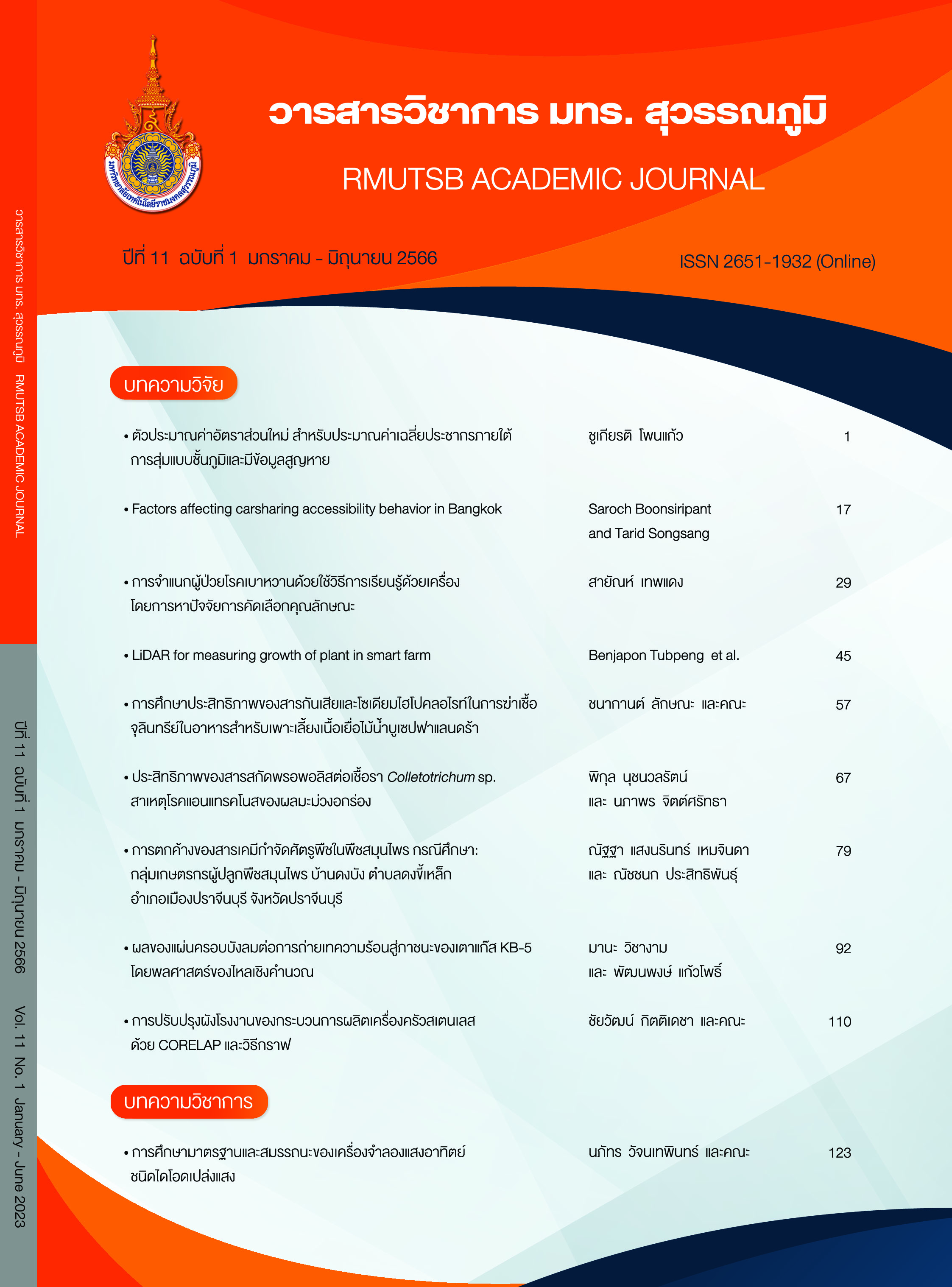Factors affecting carsharing accessibility behavior in Bangkok
Main Article Content
Abstract
Carsharing is a new mode of travel that has become increasingly popular in several countries. Due to the features of the service that can support and connect with the public transport networks. A number of factors can influence user behavior and accessibility of the service, both of which vary in many different contexts. This study therefore focuses on factors that affect the accessibility behavior of carsharing in Bangkok. The results showed that those factors, including access distance to a carsharing station and vehicle ownership, have significant impacts on accessibility and user behavior in terms of public transport use, personal transport use and walking. In this study, accessibility of the carsharing users was analyzed through a set of statistical models, it was found that the artificial neural network model (ANN) proved to be more effective than the multinomial logistic regression model (MLR) in predicting the results of the user behavior and the accessibility of carsharing. The finding in this study can be as a guideline to determine the location of carsharing stations and improve the quality of carsharing service in Bangkok.
Article Details

This work is licensed under a Creative Commons Attribution-NonCommercial-NoDerivatives 4.0 International License.
Published manuscript are the rights of their original owners and RMUTSB Academic Journal. The manuscript content belongs to the authors' idea, it is not the opinion of the journal's committee and not the responsibility of Rajamangala University of Technology Suvarnabhumi
References
Assi, K. J., Nahiduzzaman, K. M., Ratrout, N. T., & Aldosary, A. S. (2018). Mode choice behavior of high school goers: Evaluating logistic regression and MLP neural networks. A Journal of the World Conference on Transport Research Society, 6(2), 225-230.
Bucsky, P. (2020). Modal share changes due to COVID-19: The case of Budapest. Transportation Research Interdisciplinary Perspectives, 8(1), 1-5.
Faghri, A., & Hua, J. (1992). Evaluation of artificial neural network applications in transportation engineering. Transportation Research Record, 18(1358), 71-80.
Hussain, D., Hussain, A. M., Mohammed, A., Dawod, S., Atiq, R., Rahmat, O. K., & Borhan, M. N. (2017). Analysis of transportation mode choice using a comparison of artificial neural network and multinomial logit models. Asian Research Publishing Network, 12(5), 1483-1493.
Lee, D., Derrible, S., & Pereira, F. C. (2018). Comparison of four types of artificial neural network and a multinomial logit model for travel mode choice modeling. Transportation Research Record, 44(2672), 101-112.
McCulloch, W. S., & Pitts, W. (1943). A logical calculus of the ideas immanent in nervous activity. The Bulletin of Mathematical Biophysics, 5, 115-133.
McFadden, D. (1977). Modeling the choice of residential location. Transportation Research Record, 4(673), 72-77.
Rao, P. V. S., Sikdar, P. K., Rho, K. V. K., & Dhingra, S. L. (1998). Another insight into artificial neural networks through behavioural analysis of access mode choice. Computers, Environment and Urban Systems, 22(5), 485-496.
Reiffer, A., Worle, T., Heilig, M., Kagerbauer, M., & Vortisch, P. (2020). Mode choice behavior on access trips to carsharing vehicles. Integrated and Sustainable Transportation Systems (pp. 353-358). Delft Netherlands: IEEE.
Sairamya, N. J., Thomas George, S., Subathra, M. S. P., & Kumar, N. M. (2019). Computer-aided diagnosis of epilepsy based on the time-frequency texture descriptors of EEG signals using wavelet packet decomposition and artificial neural network. In P., Mallick, V., Balas, A., Bhoi, & A., Zobaa, (Eds.), Cognitive informatics and soft computing. Advances in intelligent systems and computing, Vol. 768. (pp. 677-688). Singapore: Springer.
Shaheen, S., & Cohen, A. (2016). Innovative mobility carsharing outlook winter. Retrieved 20 December 2021, from: http://tsrc.berkeley.edu/node/968


